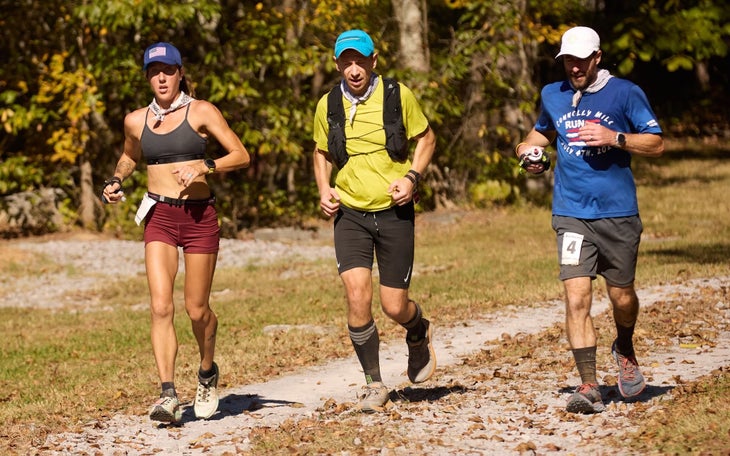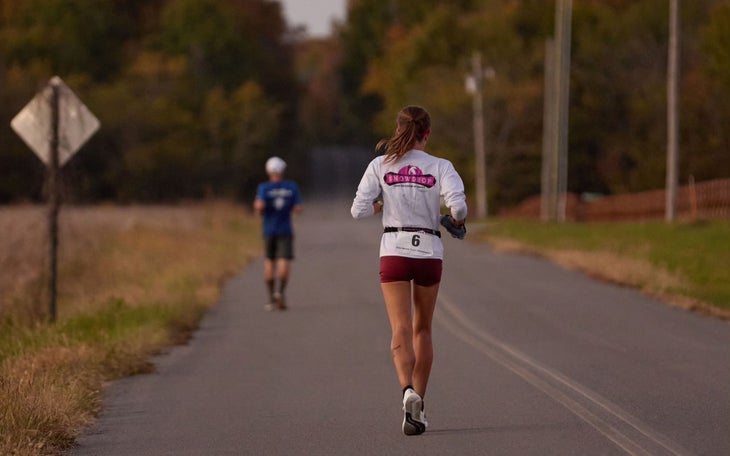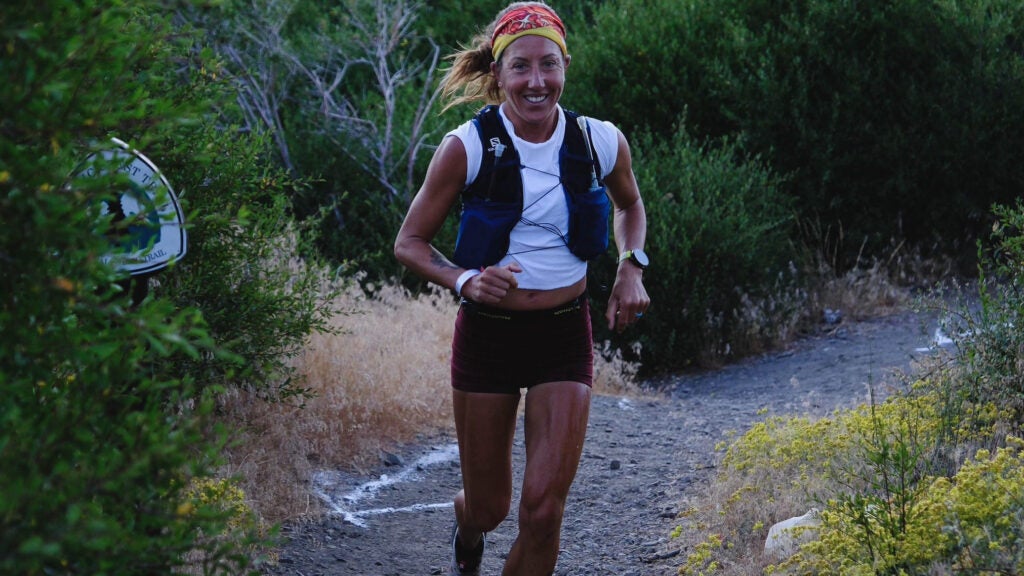No products in the cart.
Outdoor Adventure
Megan Eckert Is the New Queen of Backyard Ultras
New perk: Easily find new routes and hidden gems, upcoming running events, and more near you. Your weekly Local Running Newsletter has everything you need to lace up!
Subscribe today →.
You may have heard about the diabolical running format called Backyard Ultra, in which competitors must circle a 4.16-mile course every hour for days on end. One by one, runners drop out until only one remains, and he or she is crowned champion. On October 19, the world’s best backyard ultrarunners met in Bell Buckle, Tennessee for the annual Big Dog’s Backyard Ultra, which this year hosted the team world championships for the format (on even years the race serves as the individual world championships).
Scott Snell recorded the top distance this year, completing 366 miles in 88 hours. But the star of the event was Megan Eckert, who finished in second place. Her distance—362 miles during 87 hours—broke the previous women’s record by a whopping 51 miles (and 13 hours).
Eckert, 38, is one of the world’s top ultrarunners. She also teaches special education and coaches high school cross-country in Santa Fe, New Mexico. Outside caught up with Eckert to learn what it’s like to run for nearly four days without stopping for more than a few minutes between laps.

OUTSIDE: What attracted you to the backyard ultra format?
My first backyard ultra was actually in January, 2024, at the Saguaro Showdown in Mesa, Arizona. I had just completed a race in Houston where I ran 318 miles, and a friend suggested I try the Backyard Ultra format. I loved the open-ended nature of the event. You line up in the starting corral once every hour and go out and run this 4.167-mile loop, but how many times you’re doing to do that loop, nobody knows.
I love having a chance to see how far my body can go. I know that I’m going to face challenges out there. I know I’ll maybe get 5 minutes of rest every hour, if I’m lucky. I know I’m going to have to troubleshoot so many things during the race—how much to eat, and drink, and rest. But otherwise everything else is unknown. I love the appeal of a race in which you have no idea when it’s going to end.
How do you keep your mind engaged while running for nearly four days?
I try to focus on the lap I’m in and not the ones that are coming up. During the night at Big’s I’d listen to music, and during the daytime I’d try and chat with other runners. I love to talk to people out there. In fact, at one point a few other runners told me that they wanted to run in silence. I was like “Oh, OK, sorry.” I find conversations with other runners to be really helpful to staying engaged.
Another thing I’d do out there—I’d sing a song while I was running. But I’d often just sing every other word. I kept passing one guy when I was singing. I was like “Oh, I’m so sorry! I have such a terrible singing voice and you’re just hearing every other word.” He was amused. But sometimes it gets really quiet out there and it helps to talk or sing to yourself. Another thing I did was dance when I hit the road sections. Dancing helped keep me awake.

Do you think backyard ultra races have the potential to attract casual competitive runners?
Absolutely, because you can pick your distance you’re aiming for before going in. Maybe you want to do your first 100-mile run and finish in under 24 hours. Maybe you just want to see if you can run through the night. Maybe your goal is 50 miles. You can map that out really easily at a Backyard Ultra because of the 4.167-mile lap distance.
A Backyard Ultra teaches you good pacing, because you need to go as fast as you can. If you finish the lap in 40 minutes or 55 minutes, you still head back out after an hour. Also, you always come back to the same place after each lap, so you can fuel and hydrate properly . I see it as a welcoming format for a large swath of runners who are looking to push themselves to that ultramarathon distance.
I’m curious if the backyard ultra format has taught you lessons that you can apply to your everyday life?
I’ve noticed that when I come off of one I seem to have a lot more patience for things in my life. This lasts for weeks afterward. You realize you don’t have to always move so quickly during one of these races. After all, you’re just doing one thing, and you’re doing it for a long time. So yes, it teaches you about perseverance and patience. You become more kind. You become a better listener. Life slows down after one of these races, and you often feel like you’re living in a slow-motion situation.
What wisdom from your life as a professional runner do you try and pass on to the high school runners you coach?
I want the athletes to have fun and I want running to become a passion for them. Results are fine, of course, but you need to enjoy what you’re doing first. Yes, I teach them that they will sometimes have to push through pain, but I want them to enjoy the process of training, preparation for a race, and the lifestyle. And the other big thing is teaching them confidence. I ask my athletes to set goals before meets, and to talk about them with me. We create a plan for them to reach those goals by breaking things into smaller steps. Confidence can come from goal setting.
Source link

